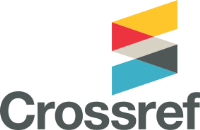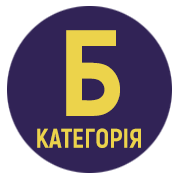APPLICATION OF ELEMENTS OF GYMNASTICS IN SWIMMING LESSONS WITH CHILDREN 9–11 YEARS OLD
DOI:
https://doi.org/10.32782/ped-uzhnu/2024-6-12Keywords:
swimming, elements of gymnastics, children 9–11 years old.Abstract
The article examines the importance of recreational swimming classes, combined with elements of gymnastics, as an effective means of physical development for schoolchildren aged 9–11. In addition, the health problems of children of early and primary school age are discussed, the results of the analysis of their functional capabilities are provided, which is important for the formation of adequate physical activity. The study includes an overview of scientific works devoted to methods of teaching and learning swimming with elements of gymnastics. In particular, modern approaches to the development of health programs, which contain recommendations for the integration of these types of activity into the educational process, have been studied. Such programs contribute to the development of general physical fitness, coordination of movements, strengthening of the musculoskeletal system, and also improve the functional capabilities of the child's body. It has been revealed that the health-improving effect of swimming on younger schoolchildren reveals that systematic swimming lessons contribute to improving the work of the cardiovascular, respiratory, muscular, locomotor and nervous systems. Thanks to water exercises, basic physical qualities are developed, in particular: endurance – a basic physical quality that ensures the body's overall functional resistance to physical exertion. It is divided into: general endurance, which increases the body's ability to perform moderate work for a long time without excessive fatigue; speed endurance, which is responsible for the ability to maintain a high pace of exercise; coordination endurance, which is associated with the ability to accurately and rhythmically perform movements even in difficult conditions. It was analyzed that swimming in combination with elements of gymnastics effectively develop these types of endurance. Gymnastic exercises help to master the correct movement techniques and provide preparation for loads during swimming. The health-improving effect of this approach largely depends on the observance of safety techniques, sanitary and hygienic norms and methodical recommendations that ensure the comfort and safety of children during classes. It was determined that for children 9–11 years old, the leading form of the health-improving process is water exercises with elements of gymnastics. In this regard, gymnastic exercises in water occupy a special place in the method of mastering swimming movements of children. Exercises allow you to get used to the water faster due to positive emotions, reduce the level of stiffness and stress.
References
Бабаліч В. А. Методичні рекомендації для проведення занять з плавання у початковій школі. Кропивницький: ПП “Центр оперативної поліграфії “Авангард”; 2019. 56 с.
Волков Л. В. Спортивна підготовка молодших школярів : навч. посіб. Київ: Освіта України, 2010. 389 с.
Глазирін І. Д. Плавання : навч. посіб. Київ : Кондор, 2011. 502 с.
Грибан Г. П. Плавання. Прикладні аспекти : навч.-метод. посіб. Житомир : Рута, 2009. 156 с.
Купрієнко В. І. Навчимо дітей плавати. Тернопіль: Мандрівець, 2016. 23 с.
Підгайна В. О. Вплив занять плаванням на здоров’я дітей молодшого шкільного віку. Вісник Прикарпатського університету. Фізична культура, 2023. Випуск 40. С. 76-80. doi: 10.15330/fcult.40.76-80
Полатайко Ю. О. Плавання. Івано-Франківськ: Плай, 2004. 259 с.
Райтаровська І. В., Шишкін О.П. Теорія і методика викладання плавання. Київ : КНТ, 2019. С. 56-58.
Шейко Л. В. Спортивні та рухливі ігри на воді як засіб розвитку фізичних якостей дітей молодшого шкільного віку. Спортивні ігри, 2022, 1 (23): С.68-75.
Pfeifer H. Fundamentals and principles of endurance training. Principles of Sports Training. Berlin: Sportverlag, 2019. P. 108-124.







